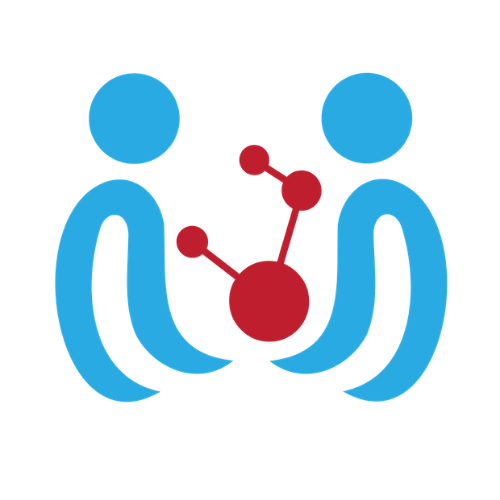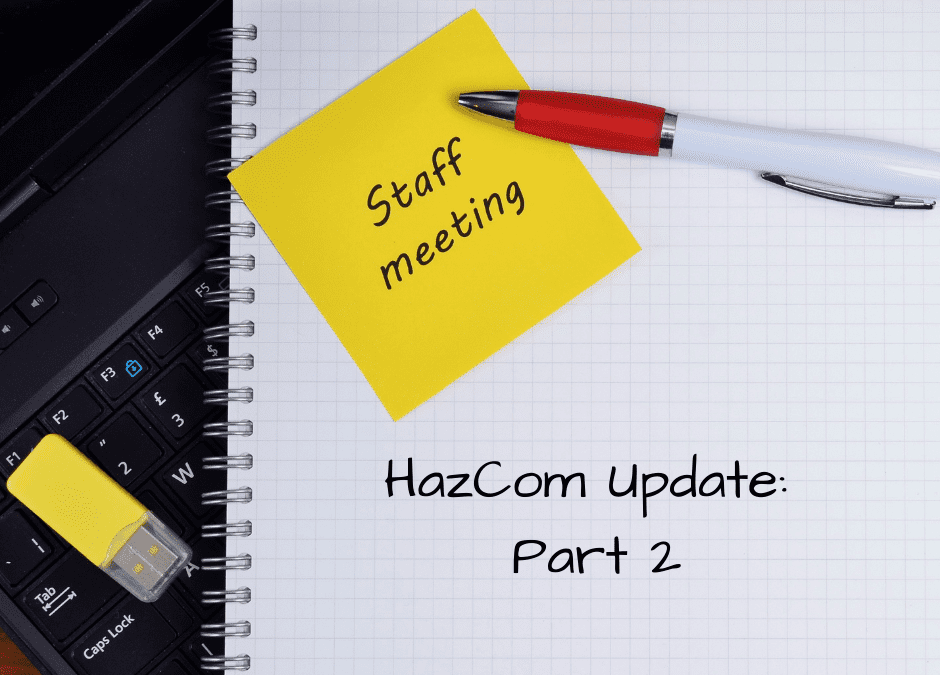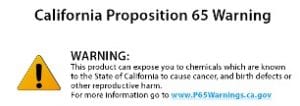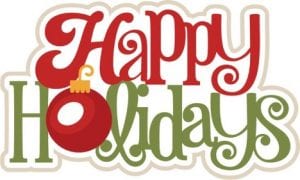In last month’s blog on Hazard Communication (HazCom) updates, I wrote about attending the Society for Chemical Hazard Communication (SCHC) virtual conference, and I promised a few additional nuggets of information this month. (Also, in case you’re wondering, my staff meetings have been reduced in the past month. Perhaps they will increase next year.) As promised, here are some additional HazCom updates:
- California’s Safe Drinking Water and Toxic Enforcement Act (aka Prop 65):
If you manufacture product and sell to consumers in California, you should already be aware that you are required to label your products if they contain any of the Prop 65 list of chemicals known to cause cancer or birth defects or other reproductive harm. However, did you know that if you manufacture outside of California and your products are not going to consumers, but instead are being used in the workplace as either industrial chemicals or laboratory chemicals, you are not held accountable? That’s right. Prop 65 may not be enforced against out-of-state manufacturers of workplace chemicals. This exemption has been in place for some time now, but many were not aware of it. That being said, it’s still good product stewardship practice to somehow inform your downstream customers about the presence of these chemicals.
- Occupational Exposure Banding (OEB) E-Tool:
Occupational Exposure Limits (OEL) are established to provide workers with information on the safe levels of exposure to airborne chemicals. However, there are only about 1,000 chemicals with established OELs, compared to approximately 85,000 chemicals in the workplace. With that in mind, the National Institute for Occupational Safety and Health (NIOSH) has developed a free tool called the Occupational Exposure Banding E-Tool. The process assigns chemicals into bands based on the potency and hazards of the chemical. These bands then correspond to a range of acceptable exposure concentrations, such as seen in the above graphic. This tool can and should be used to improve guidance on safe levels of exposure to improve worker health and safety. And it’s free to use!
At the end of the day, we all want to improve the safe handling of the chemicals we manufacture or use. Good product stewardship practices are critical. If you have any questions on either Prop 65 or the NIOSH OEB e-tool, please contact us. At Strategic Realm Consulting, we work hard to keep current on the latest changes to product regulations, so you don’t have to.
Before I end this post, I would like to wish you a very joyous holiday season, however you may be celebrating this year. I am sure that we are all looking forward to a new year with hope and optimism for improved circumstances. Please stay healthy and safe!




